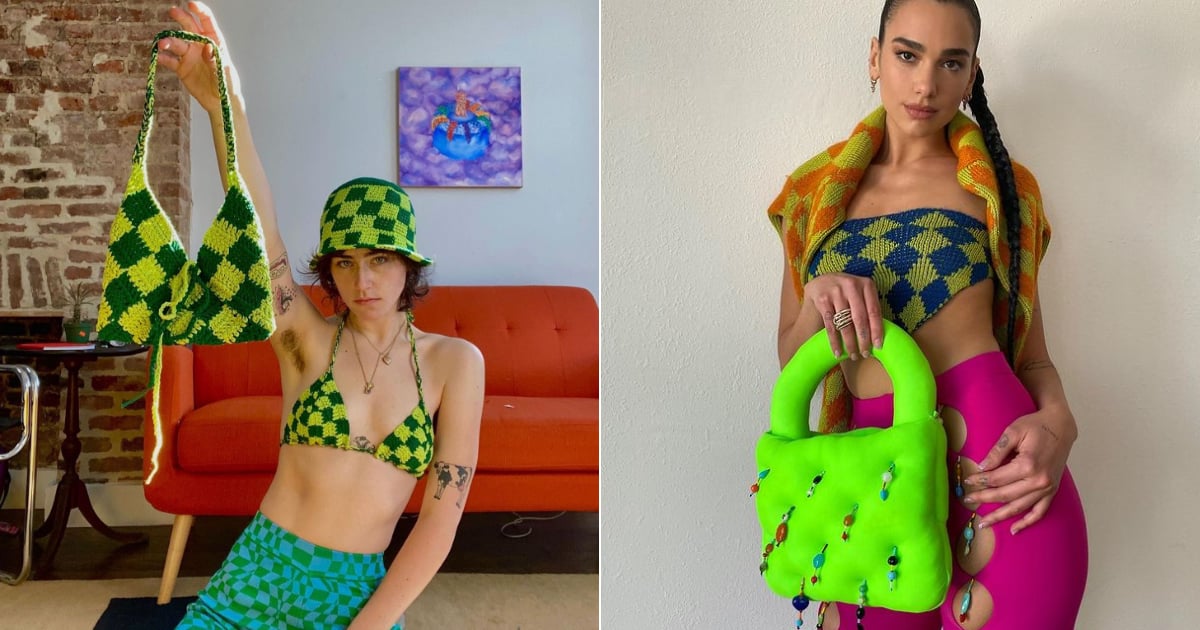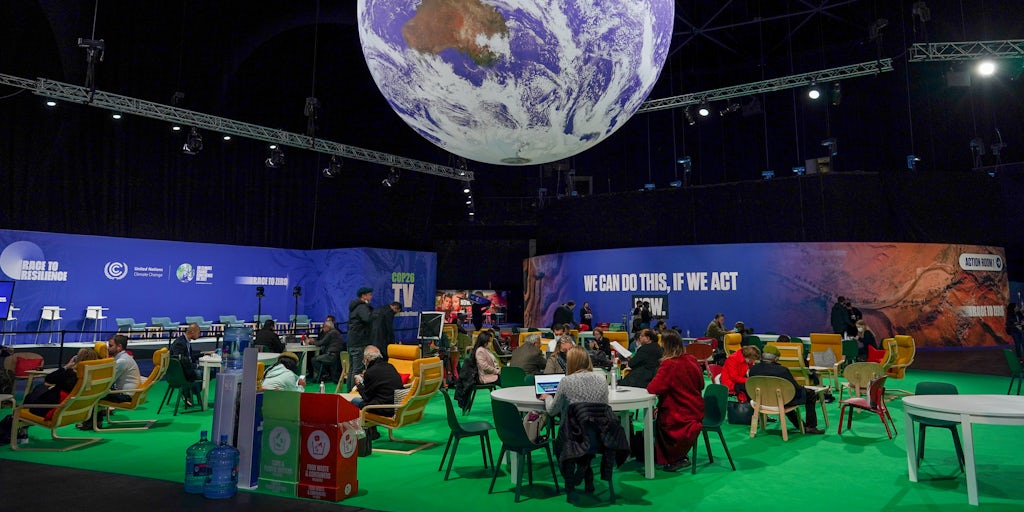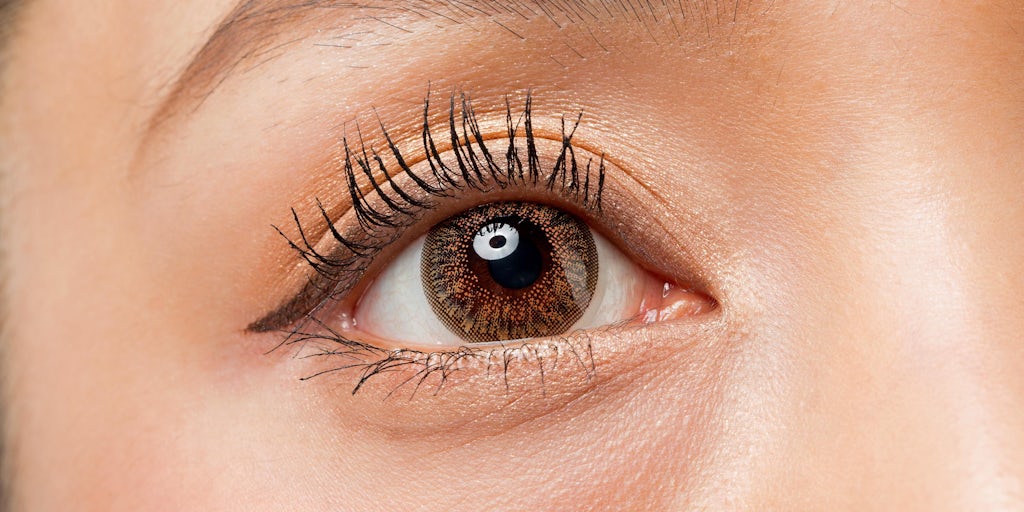The Handcrafted Sustainable Fashion Trend of the 2020s
It’s almost impossible to realize an aesthetic movement is being born — or reborn — when you are in the eye of a cultural storm. The pandemic is undoubtedly one of the most pivotal historic moments that we will have witnessed in our lifetime. The reflections that many of us have experienced while being isolated in our homes have inspired a longing to return to nature, a renewed appreciation in the therapy of making things by hand, and a criticism for fast fashion and the pace of the internet. The handcrafted trend is about to define the fashion and lifestyle of our generation. Taking inspiration from the arts and crafts movement of the late 19th century and 1960s subcultures, we look at the fashion trends that are responding to work-from-home culture, environmentalism, and antiracism initiatives.
Whether it is a handmade sweater, a handcrafted piece of jewelry, or a fresh sourdough loaf made from scratch, when something is made by hand, we immediately think of better, lasting quality and feeling connected to the creator. The handcrafted movement encourages us to dress in fashion and styles that make us feel more connected to the natural world and to each other. Trends of the 2020s include hand-painted and patchwork clothing; kitsch knitwear and babushka scarves with hints of our grandmother’s love; “cottagecore” and “grannychic” aesthetics; and mythical details like butterflies, mermaids, swirling plants, and flowers.
Independent designer Kat Rose created hand-painted jeans that were later worn by Dua Lipa.
The handcrafted movement draws parallels to the arts and crafts movement at the turn of the 20th century. Also called the Edwardian era in European fashion history, technology and innovation in the early 1900s were happening so quickly that the fashion industry couldn’t keep up. Instead, fashion enthusiasts experienced the first major nostalgia by clinging to the styles of the past and romanticizing medieval moments like knights in shining armor and damsels in distress, according to Amanda Hallay of The Ultimate Fashion History. The arts and crafts movement embraced handmade fashion and interiors that featured natural elements and resisted the mechanization of the factory system.
Much like Marie Kondo‘s popular home-tidying method, Edwardian-era textile designer William Morris believed that you should “have nothing in your house that you do not know to be useful, or believe to be beautiful.” The arts and crafts movement was not only about filling your home with things that made you feel good, but it was also a social movement with a belief that things that make us feel good are created by people who felt good while making them. Morris only tolerated the factory system to the extent that it made the lives of workers easier, and he was critical of its potential for exploiting factory workers and corrupting the natural creativity of people. The arts and crafts movement preferred using natural dyes on textiles and revived many traditional practices in stained glass, printing, and tapestry weaving. There are many parallels between the handcrafted movement that is happening at the turn of the 21st century and the arts and crafts movement that happened at the turn of the 20th century — especially in terms of protecting factory workers, moving away from fast fashion, and engaging in more DIY fashion projects at home.
Understanding why the arts and crafts movement emerged gives context to popular fashion trends of the 2020s like puff sleeves and massive bib collars, aesthetics like cottagecore and grannychic, and the romanticization of period dramas like Bridgerton — because they remind us of simpler times before technology when life moved more slowly and we felt more connected to nature and creation. It’s not only the arts and crafts movement that is seeing a slight renaissance but also themes and trends of the 1960s — a time when fast fashion as we know it really took off, antiracism initiatives created the politicization of fashion, and our problematic relationship with plastic and polyester began. The 1960s was a decade of rigid gender roles being advertised as “normal” to the masses, like the housewife archetype, and traumatic assassinations of progressive US leaders like Martin Luther King Jr., John F. Kennedy, and Malcolm X. The creation of the housewife archetype in the decade prior encouraged a feminization of crafts and making things by hand. Sewing, knitting, baking, and cooking were labeled as “feminine arts” in contrast to industrialization and “masculinity”. During the pandemic and consequent lockdown, many of us have indulged — regardless of gender — in the handcrafted arts and are realizing how crucial it is to embrace them in order to live a happier, healthier, and more sustainable life.
Dua Lipa’s handbag looks like it was made from an arts and crafts project.
The handcrafted movement of the 2020s might be a continuation of fashion and lifestyle themes of the early and mid-20th century, but what makes right now so unique is that we are being given an opportunity to pick and choose the parts of our past that we want to reprise and the moments that we are hopefully ready to challenge and learn from. When it comes to fashion and style, the handcrafted trend is emerging with the help of three distinct themes — slow fashion, independent brands, and natural fabrics.
Slow Fashion: Working from home forced a lot of us to slow down and taught us how to use our hands to create things once again. Whether that be buying your first sewing machine, deciding to do a wardrobe clear-out and upcycle on Depop, or getting into knitting and crochet, work-from-home culture renewed our appreciation for quality pieces that take a bit longer to make or save up for. You might remember what happened on Black Friday 2020 when fast-fashion retailers were selling dresses for less than a pound, and that was only a few months after two million garment workers lost their jobs in the midst of COVID-19 because major retailers canceled $3.3 million in clothing orders. Instead of exploiting workers for cheap clothes and then sending those clothes to landfills after being worn a few times, the handcrafted trend suggests that we only buy things that we love, clothes that make us feel good and are created with transparency.
Independent Brands: With help from Instagram’s marketplace feature and a growing preference for investing in BIPOC-owned brands, it is becoming easier to find independent brands that cater to our unique aesthetics. Investing in inclusive and ethical small boutiques not only slows down the fashion system, but it also means we never have to worry about showing up in the same dress as someone else. Buying small and ending our support for fast fashion also means we are more closely connected to the creator of a garment, which will also make us feel good about the fashion we choose to wear. Whether you believe in energy or not, it exists, and a garment made by someone you could find, thank, and tag on social media will make you feel so much better than a garment that was made in an inhumane factory, 5,000 miles away, that will likely fall apart after a few times in the wash.
Natural Fabrics: Sustainable textiles and upcycled elements are central to creating a truly circular fashion industry. Similarly to the preference for natural dyes during the Edwardian era, we have more recently experienced an influx of innovative plant-based fabrics like Desserto’s cactus leather and garments that are made from upcycled materials like patchwork denim, or pieces that have natural design elements and motifs like hand-painted jeans or butterfly details. There is certainly a longing to feel more connected to nature, slow down, take some of the good lessons we’ve learned in lockdown, and apply them to our postpandemic world. The handcrafted movement is the fashion industry’s next step towards creativity and circularity. Investing our time and money into consciously made clothing by independent brands that use sustainable fabrics is the second-best decision we can make for sustainability — the first being to stop shopping altogether and start making our clothes by hand.





